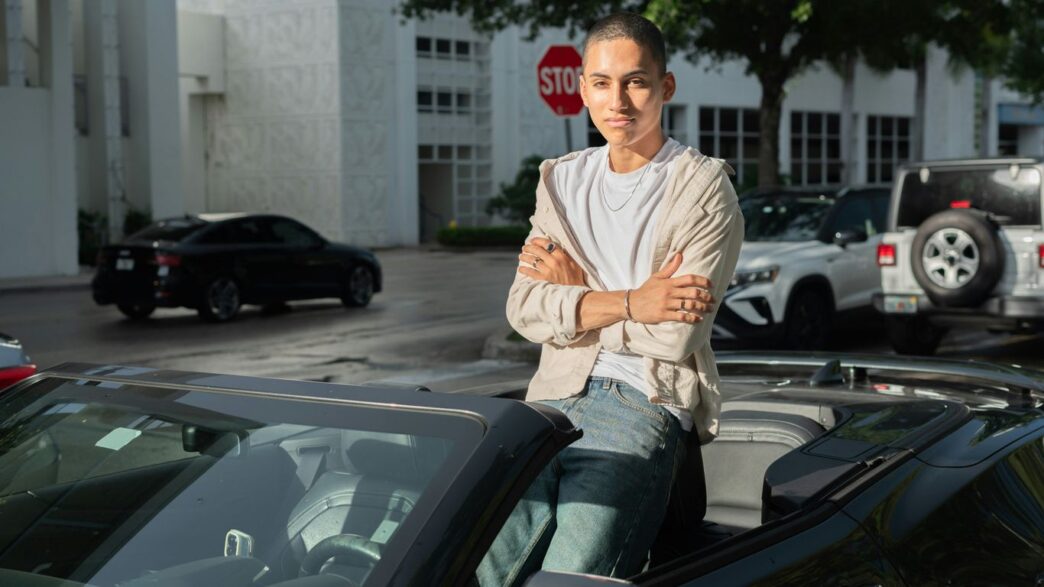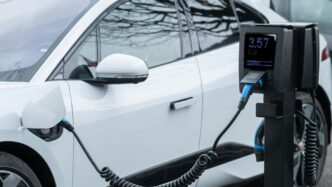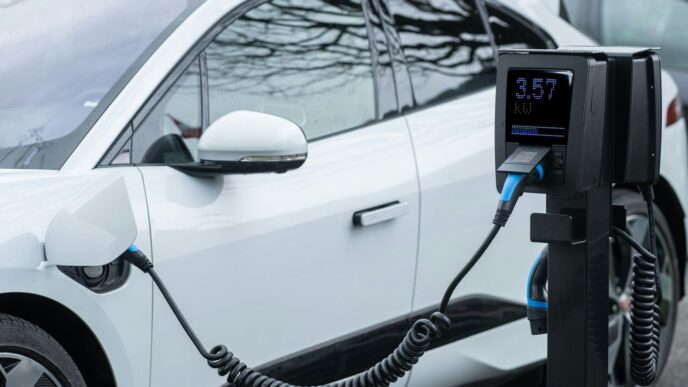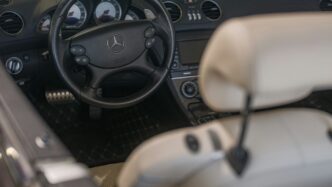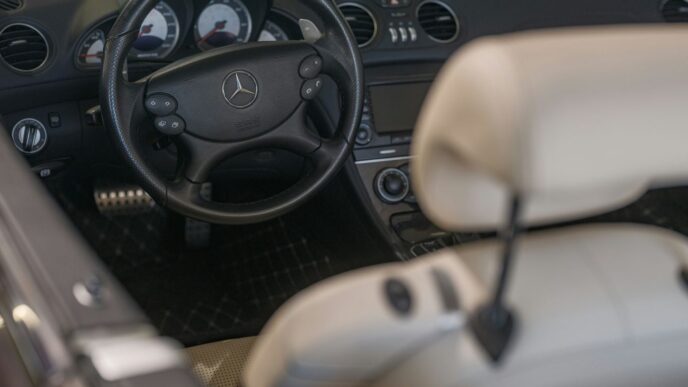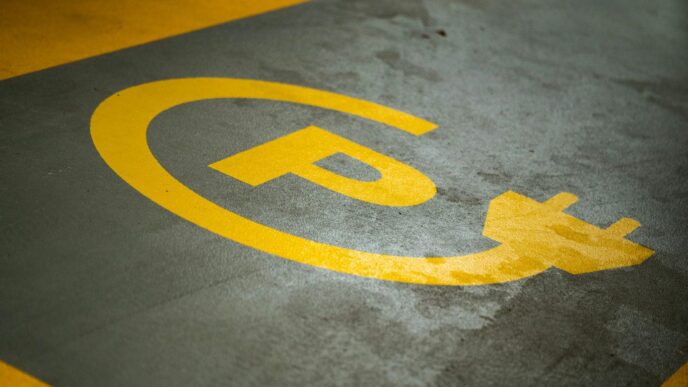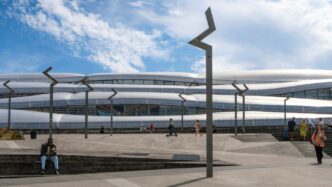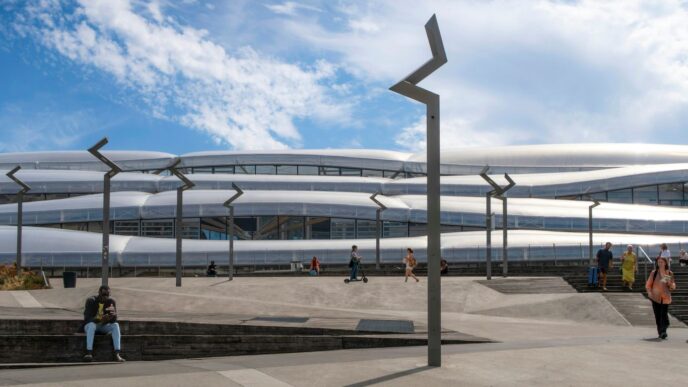Volkswagen and Uber Forge Future
Big news in the world of getting around! Volkswagen and Uber have teamed up, and it looks like they’re planning to put a whole lot of self-driving electric vans on the road.
Strategic Partnership Announced
This isn’t just a small handshake deal. Volkswagen, through its autonomous driving division, is partnering with Uber to bring a new kind of ride-hailing to the US. The plan is to have thousands of Volkswagen’s ID. Buzz electric vans, equipped with self-driving tech, join Uber’s fleet. It’s a pretty significant move that shows how serious both companies are about the future of getting from point A to point B.
Autonomous ID. Buzz to Join LA Fleet
Los Angeles is going to be the first place to see these self-driving ID. Buzz vans in action. They’re starting with testing later this year, and then aiming for full commercial services to kick off in 2026. Imagine hailing one of those cool, retro-looking ID. Buzz vans and having it take you wherever you need to go, all by itself. It’s a big step towards making electric and autonomous vehicles a normal part of city life.
Commitment to Electric Mobility and Autonomy
This partnership really highlights what both Volkswagen and Uber are aiming for. VW is pushing hard on electric cars and figuring out how to make them drive themselves, and Uber is all about expanding its services and staying ahead in the ride-hailing game. By working together, they’re showing a clear commitment to a future that’s both greener with electric power and more convenient with self-driving technology.
Autonomous ID. Buzz Deployment

So, Volkswagen and Uber are teaming up, and it looks like their self-driving ID. Buzz vans are going to start showing up on LA streets pretty soon. This isn’t just a small test run, either. They’re talking about thousands of these electric vans hitting the road over the next decade.
Thousands of Self-Driving Vans Planned
Volkswagen plans to put a massive number of these autonomous ID. Buzz vans into service. The goal is to have a significant fleet ready to go, making it easier for people to get around without needing a human driver.
Testing Phase to Begin This Year
Before these vans start picking up regular passengers, there’s a testing period planned. This phase is set to kick off by the end of 2025. It’s all about making sure the technology is safe and reliable before it’s available to the public.
Commercial Services Launching in 2026
If all goes well with the testing, you can expect to start seeing these self-driving ID. Buzz vans offering commercial rides in 2026. Los Angeles is slated to be the first city to get this service, which is pretty exciting for anyone living there.
Key Players in the Collaboration

This big move between Volkswagen and Uber isn’t just about putting self-driving vans on the road; it’s about bringing together some serious talent and tech. Let’s break down who’s doing what.
Volkswagen ADMT LLC’s Role
Volkswagen’s dedicated arm for autonomous driving, Volkswagen ADMT LLC, is really the engine behind the tech. They’re the ones developing and refining the self-driving system that will power these ID. Buzz vehicles. Think of them as the brains of the operation, making sure the vans can handle LA’s crazy streets safely and efficiently. They’ve been working on this stuff for a while, building on their experience with automated driving systems. It’s a big undertaking, and they’re bringing a lot of engineering power to the table.
Moia Facilitates Integration
Moia, another part of the Volkswagen family, is stepping in to help bridge the gap. They’re known for their experience in mobility services, especially in Europe with their ride-pooling services. For this partnership, Moia’s job is to make sure the autonomous ID. Buzz vans can actually work within a real-world ride-hailing system. This means figuring out the logistics, how passengers will book rides, and how the fleet will be managed day-to-day. They’re the ones making sure the technology actually gets used in a practical way.
Uber’s Platform Integration
And then there’s Uber. They’re the ones with the massive existing network of riders and drivers. Their role is to integrate the autonomous ID. Buzz vehicles directly into their popular app. This is huge because it means millions of people will have easy access to this new form of transportation. Uber’s platform is already set up to handle ride requests, payments, and driver management, so they’re adapting that to work with self-driving vehicles. Their goal is to make hailing an autonomous ride as simple as ordering a regular Uber. It’s all about making the transition smooth for the end-user.
Shaping the Future of Urban Mobility
This partnership between Volkswagen and Uber isn’t just about putting a few self-driving vans on the road; it’s a big signal about where city transportation is headed. We’re seeing a clear move towards making our cities smarter and greener, and this deal fits right into that picture. The integration of autonomous electric vehicles into existing ride-hailing networks is a major step towards making that future a reality.
Think about it: fewer cars driven by humans means less traffic congestion and potentially cleaner air, especially with the ID. Buzz being all-electric. It also means a different kind of commute. Instead of waiting for a bus or trying to hail a cab, you might just summon a self-driving pod that takes you exactly where you need to go. It’s a shift from owning a car to simply using a mobility service.
Here’s what this collaboration could mean for how we get around:
- More efficient travel: Autonomous vehicles can optimize routes and driving patterns, potentially reducing travel times and fuel consumption (or battery usage, in this case).
- Increased accessibility: Services like this could offer new transportation options for people who can’t drive or have limited access to traditional public transport.
- New urban planning considerations: As more autonomous vehicles hit the streets, cities will need to think about how to manage them, from dedicated lanes to charging infrastructure.
This move also ramps up the competition in the ride-hailing world. Companies are really pushing to be the first to offer reliable, widespread autonomous services. It’s not just about who has the most cars anymore, but who can offer the most advanced and convenient way to travel. We’re also seeing a broader trend where car manufacturers and tech companies are working together more closely. It’s a sign that the future of getting around is going to be a lot more connected and automated.
Volkswagen’s Autonomous Driving Initiatives
Volkswagen hasn’t exactly been a stranger to the world of self-driving tech. They’ve been tinkering with this stuff for a while now, trying to get it right. Back in 2019, there were reports about them planning to test an autonomous version of their electric I.D. Buzz in Tel Aviv starting in 2022. The idea was to test a bunch of these vehicles, first with safety drivers, and then eventually, fully on their own. It was a pretty ambitious plan.
To really push this forward, VW created a special division called Volkswagen Autonomy, or VWAT. Think of it as their "center of excellence" for all things autonomous driving. Their main focus was on building Level 4 and Level 5 systems, which are pretty advanced levels of self-driving capability. They also made moves to get the right tech, like investing in lidar startup Aeva, whose sensors were slated for the ID Buzz AV. It’s all about getting the sensors and the brains of the operation working together.
Previous Testing in Tel Aviv
As mentioned, Tel Aviv was slated to be a testing ground. The plan was to put between 50 and 100 autonomous vehicles on the road there. This wasn’t just a quick test; it was meant to be a serious evaluation of the technology in a real-world city environment. They wanted to see how the cars handled traffic, pedestrians, and all the unpredictable stuff that comes with city driving. It was a big step towards understanding the practical challenges of autonomous mobility.
Establishment of Volkswagen Autonomy
Volkswagen Autonomy (VWAT) was set up as a dedicated unit. This wasn’t just a side project; it was a clear signal that VW was serious about developing its own autonomous driving tech. By creating this "center of excellence," they aimed to consolidate their efforts and expertise in one place. This allowed them to focus on developing the complex systems needed for self-driving cars, from the software to the hardware integration. It’s like building a specialized team to tackle a really tough problem.
Investment in Argo AI
Volkswagen also put money into Argo AI, a company focused on self-driving technology. This partnership was a significant move, showing VW’s willingness to collaborate and invest in external expertise. Argo AI was working on developing the software and hardware for autonomous vehicles, and VW’s investment helped fuel that development. It was part of a broader strategy to accelerate their progress in the autonomous driving space, pooling resources and knowledge to get there faster.
Uber’s Evolving Transportation Strategy
Shift in Autonomous Vehicle Program
Uber’s approach to self-driving tech has seen some changes over the years. Remember when they were really pushing their own autonomous vehicle development? Well, things have shifted. Instead of building everything from the ground up themselves, they’re now focusing more on partnerships and integrating existing autonomous solutions into their platform. It’s a smart move, really, because developing this kind of tech is incredibly complex and expensive. By teaming up with companies like Volkswagen, Uber can get access to advanced self-driving vehicles without shouldering the entire burden of research and development. This collaboration with VW, for instance, means they’ll be adding thousands of self-driving ID. Buzz vans to their fleet, starting with testing this year and aiming for commercial services by 2026.
Focus on Ride-Hailing Services
At its core, Uber is still all about getting people from point A to point B efficiently. This partnership with Volkswagen really highlights that. They’re not just dabbling in autonomous tech for the sake of it; they’re looking at how it can directly improve their main ride-hailing business. Imagine hailing an all-electric, self-driving ID. Buzz through the Uber app – that’s the goal. This move also comes at a time when the ride-hailing market is getting pretty crowded. Competitors are expanding and trying new things, so Uber needs to stay ahead. Adding autonomous electric vehicles is a big way to do that, offering a glimpse into the future of urban transport.
Investment in Aurora
While the Volkswagen partnership is a big deal for their fleet, it’s worth noting Uber’s other moves in the autonomous space. They previously invested in Aurora, another company working on self-driving technology. This shows Uber’s broader strategy: they’re not putting all their eggs in one basket. They’re exploring different avenues and technologies to ensure they’re well-positioned for whatever the future of autonomous mobility looks like. It’s a bit like hedging their bets, but in a way that still pushes the whole industry forward. The goal is to integrate these advanced vehicles and services into their existing, massive network, making transportation more accessible and, hopefully, more sustainable.
What’s Next for Self-Driving Rides?
So, Volkswagen and Uber teaming up with the ID. Buzz is pretty big news. It feels like we’re really starting to see self-driving cars move from just a concept to something that could be part of our daily lives, at least in places like Los Angeles. This partnership shows that big companies are serious about making electric and autonomous vehicles the norm for getting around. It’s going to be interesting to watch how this all plays out over the next few years, especially as more cities start to see these kinds of vehicles on their streets. It definitely feels like a step towards a different kind of future for how we travel.


